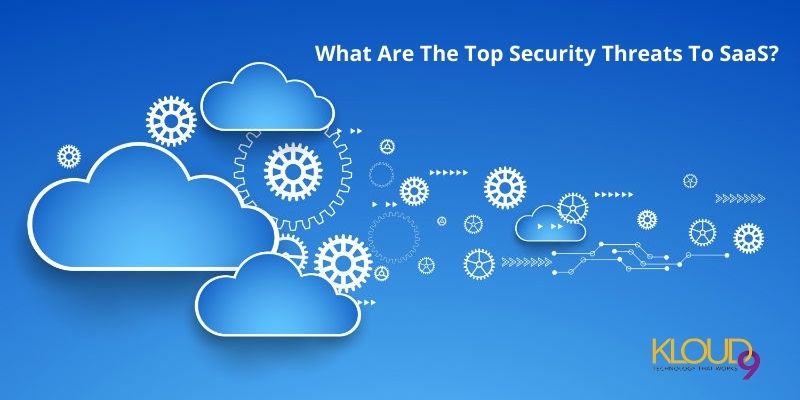If you want, Software-as-a-Service can help you become a better company. The rate at which businesses that use SaaS grow is rapid. It is increasingly becoming a popular choice because of its need for low infrastructure, easy scalability, and upgrades. In as much as it is useful to businesses, users need to protect themselves against breaches.
Security breaches are harmful to SaaS customers. A vulnerable application on a company’s website can cause it. Finding a solution to this is quite easy. All you need to do is follow through with its security best practices. From its security standards, you can draw out a checklist to protect you against any threats.
What Are The Top Security Threats To SaaS?

Finding a solution to a problem that is known is not always complicated. For SaaS, the possible issues are well known. There are quite some threats to this cloud service. The most common ones are:
• Abuse of cloud services
• Hijacking of account
• Data breaches
• Insecure APIs and interfaces
• Insider threats
• Insufficient identity and credentials
• Applistructure and metastructure failure
• Misconfiguration
• Weak control plane
Why Is A SaaS Security Checklist Needed?
With SaaS, it is beneficial for businesses to have their application on the cloud. Using remote servers to process your data will eliminate the need for data storage and premise updates. This can save you expenses in operational costs. Using this cloud service will also free your staff from additional workload, and make them focus on more valuable and productive tasks.
5 Points To Get You Started With A SaaS Security Checklist
You need to implement and commit to top-notch security for your SaaS to be well protected. Understanding the vulnerable hotspots will make it easy for you to find ways of protecting your application from the latest risks. Here are some solutions to help you with the security of your SaaS application:
1. Develop And Uphold A SaaS Security checklist
Before you start the project, ensure that all team members are aware of the requirements. Knowing the requirements will make you conscious of the checks you need to do. Checks may vary depending on the project at hand. An IT vendor can help you develop this checklist that you will have to review and update with time.
After using the requirements to build your checklist, ensure that it is prioritized. You must have on the list things like application, compliance, and internal control security standards. Ensure that Any SaaS provider you use meets up to these security standards. You can also eliminate all security threats by assessing your application when developing the checklist.
To further regulate all issues related to security, create off-boarding or an onboarding checklist. You can do this by encrypting your computer and making use of password managers. To be sure of data flow within the ecosystem of your application, make use of centralized user management. This is helpful to the security of your SaaS application.
2. Protecting employees
Providing security training for your employees should be a must. It should also be prioritized on your checklist. Create unique user accounts and avoid sharing accounts. In addition to this modality, always allow the two-factor verification for all logins. Features like role-based access should also be allowed as it can only give just a user permission to edit data.
Increasing security awareness will also help counter the common hacking methods. When employees are educated on how SaaS security works, they can prevent phishing attacks by learning to recognize them. Keeping your employees up to date as regards the policies and principles of your organization’s security will make them proactive.
3. Implement cohesive security controls
Creating a security culture is beneficial to the security of your SaaS application. You should have a unit within your organization that focuses on all issues relating to security. Implementing such will ensure that security is a priority, and the best possible solution is always provided for all issues. The security controls you can implement may include:
• Access controls implementation
• Advanced malware prevention
• Data tokenization and encryption
• Data loss prevention
• Offline repository inspection
• Password policy creation
• Two-factor authentication
4. Ensure secure deployment
Ensuring that your SaaS security is deployed safely is another thing that must be on your checklist. The two available ways through which they can be deployed are:
Self-hosted deployment: The responsibility of preventing network penetration attacks and Denial-of-Service (DoS) is on you. To best solve this problem, incorporate continuous delivery, integration, and deployment. It is also recommended that the deployment process is automated as much as possible.
Cloud deployment: Here, vendors provide all the necessary services that ensure the hardening of SaaS infrastructure, data segregation, and data security. Reputable vendors like Amazon and Google will shoulder the responsibility of your SaaS security. When using the cloud deployment way, ensure that you check if your vendor follows all security standards set by authorities.
5. Configure automated backups
Another important aspect that must be on your SaaS security checklist is backup generation. With sophisticated SaaS hardware, backup generation can be automated. This will not consume much of your time. This security measure is usually unnoticeable but very effective should there be data loss.
Getting it done properly will take you little effort and time. Disaster recovery and continuity are good for business, and having an automated backup system will make it much easier for you. With it, you will be able to recover all system data after a security attack or data loss.
Conclusion
SaaS is good for business when you are managing the data of customers, managing an online store, or optimizing procurement. These services will get your job done accurately and on time. The cost of investing in it is low, and implementing its security checklist in your business will help secure your SaaS application at all times.




You must be logged in to post a comment.